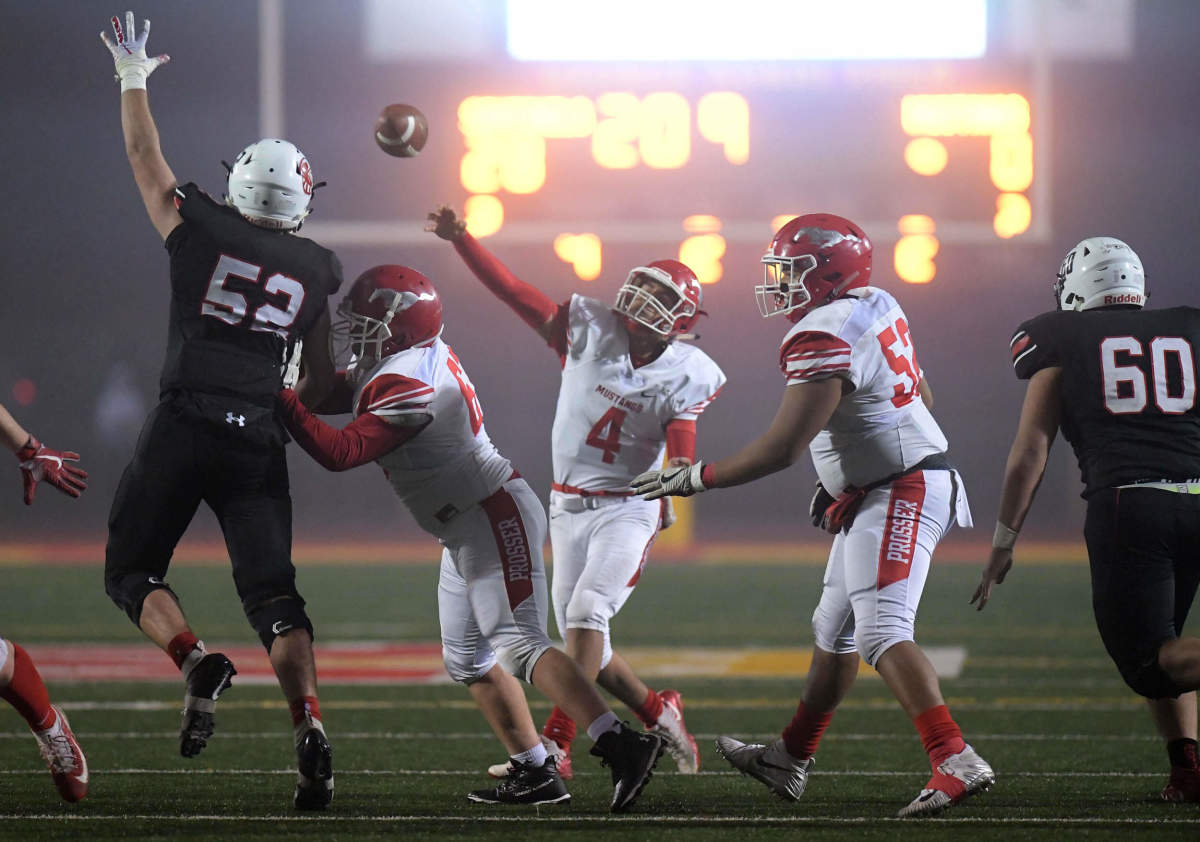The WIAA approved 3 amendments that will change Washington high school transfer rules. Here’s what they mean.

The Washington Interscholastic Activities Association's Representative Assembly passed 18 amendments on Monday. Three of them altered athletic eligibility rules in cases of transfers.
All of the amendments will go into effect at the beginning of the 2020-2021 school year. The WIAA’s 53-person representative assembly is made up of 35 high school and 18 middle school administrators across the state.
The transfer-related rule changes was aimed at making cases of transfers “more equitable and consistent with the residency rules,” according to athletic directors from Inglemoor, Glacier Peak, Kamiakin, Lake Washington and Lakes — the authors of several amendments.
Here are the amendments and what they mean:
"Window of transfer"
One of the three amendments passed by vote creates what is referred to as a “window of transfer,” the interim between when a student is in middle school and high school, by which a student can choose to attend a school out of boundary without moving and retain varsity eligibility.
Establish your high school from the outset, the rule says, and suffer no penalty.
In the past, some eighth graders around the state who were seeking a move to a public high school out of their residential boundary required a year of ineligibility as a varsity athlete. At the same time, going to a private school under the same circumstances offered immediate eligibility.
Often times, students seek a specific academic program only a certain school offers, such as AP or IB. Sometimes, a student chooses a school based on athletics, or religious beliefs.
Beginning in the 2020-21 school year, in those cases, the playing field is more equitable.
“The amendment was written by ADs who are tired of fighting that and said, you know what, that window of opportunity, no matter where you go your ninth grade year, that's where you're eligible,” WIAA executive director Mick Hoffman said. “And if you move from there, now you're a transfer. it just gives every kid from ninth grade the additional choice they want and not to give up their eligibility.”
Private school boundary
Another amendment assigns a 50-mile radius as a boundary to private schools.
Under the old rules, if a student transferred to a private school, they would be granted automatic athletic eligibility, a rule that gave private schools an inherent advantage over boundary-bound public schools. For those looking to transfer and skirt athletic eligibility hurdles, private schools held an advantage, because enrollment was not limited by a boundary. Now, it is.
A student who transfers to a private school within a 50-mile radius of their residence will forfeit a year of varsity eligibility under new rules. And any move by a family within the 50-mile radius would require continuous enrollment at the original private school of residence in order to maintain continuous athletic eligibility at the varsity level.
“What we're hearing on this one is because you can become eligible within a 50-mile radius to attend a school, shouldn't you have to move out of that to be eligible somewhere else? Similar to what you'd have to do at a public school setting,” Hoffman said. “The trick with this is there's not a lot of public school boundaries that are 50 miles.”
Establishing a new boundary
One of the amendments now adds that a student who chooses to attend a school outside of their residential boundary — like the “window of transfer” rule now allows — remains eligible at that school even if the family moves.
Any transfer during a student’s high school experience would result in a year of varsity ineligibility, unless that ineligibility is appealed and hardship is proven.
The hardship and process, which allows students with special circumstances to appeal to their respective district and potentially the WIAA, will remain unchanged, Hoffman said.
Club coaches, trainers and transfers
The rule that arguably stood to have the greatest impact, failed.
The amendment proposed that a student is not immediately varsity eligible if they transfer to join a coach or player from a non-school affiliated team — club, AAU, legion — even if the family unit moves. There is a belief among administrators across the state that non-high school club influences have, in some cases, shepherded students to certain schools, which led to the drafting of the amendment.
But concerns around the way the amendment would be policed and enforced arose.
Questions emerged during district meetings around the state that the amendment, which was struck down 11-24 by the representative assembly, could create unintentional consequences for students who have played and trained with several coaches.
What happened if a student briefly played one tournament with a team in middle school, then that coach wound up at the boundary school his family moved to?
“The last thing we want is a ‘gotcha’ situation,” Hoffman said. ‘We want something we can enforce uniformly and fairly. We don't want kids to get caught in something they had no idea. If people are cheating and get caught, they get caught. We don't want unintentional eligibility issues.”
Hoffman said he wouldn’t be surprised if the amendment, which garnered support from administrators across the state in the drafting process, reappears with new framing in future years.
Here is more information on the voted on amendments.





